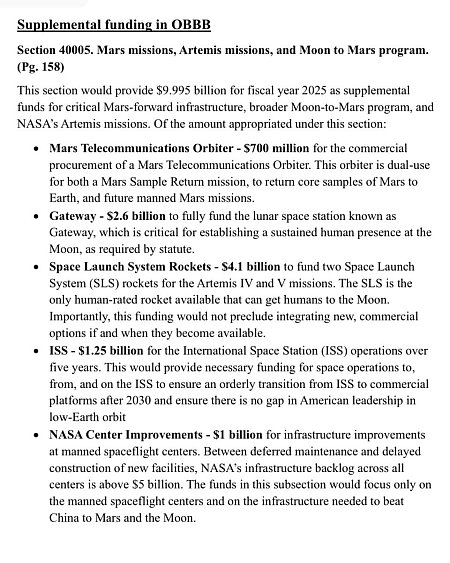Russia launches Progress freighter to ISS
Russia today (July 4th in Kazakhstan) successfully launched a new Progress freighter to ISS, its Soyuz-2 rocket lifting off from the Baikonur spaceport in Kazakhstan.
The freighter will dock to ISS in two days, bringing with it almost three tons of cargo and more than a half done of hardware and equipment. Expect NASA to order its astronauts to shut the hatch between the American and Russian sections of ISS due its fear that a docking to the Zvezda module could cause a catastrophic failure because of the stress fractures in that module’s hull. That docking will however not be directly to Zvezda, but to the Poisk module that is itself docked to Zvezda.
The lower stages and strap-on boosters crashed inside Kazakhstan in the normal drop zones that Russia has used for decades.
The leaders in the 2025 launch race:
84 SpaceX
36 China
10 Rocket Lab
8 Russia
SpaceX still leads the rest of the world in successful launches, 84 to 63.
Russia’s launch pace this year is its lowest pace in decades. At this rate Russia might only get about 15-17 launches off in 2025, a count more comparable to what it did in the very early 1960s. This decline can be directly linked to the Russian invasion of the Ukraine. That invasion caused Russia to lose billions in contracts in the international launch market. And it continues to prevent Russia from winning any new international contracts as well. Except for its government launches (which are limited due to government cash shortages), the only other missions Russia flies are those to ISS, and those number about four per year.
Russia today (July 4th in Kazakhstan) successfully launched a new Progress freighter to ISS, its Soyuz-2 rocket lifting off from the Baikonur spaceport in Kazakhstan.
The freighter will dock to ISS in two days, bringing with it almost three tons of cargo and more than a half done of hardware and equipment. Expect NASA to order its astronauts to shut the hatch between the American and Russian sections of ISS due its fear that a docking to the Zvezda module could cause a catastrophic failure because of the stress fractures in that module’s hull. That docking will however not be directly to Zvezda, but to the Poisk module that is itself docked to Zvezda.
The lower stages and strap-on boosters crashed inside Kazakhstan in the normal drop zones that Russia has used for decades.
The leaders in the 2025 launch race:
84 SpaceX
36 China
10 Rocket Lab
8 Russia
SpaceX still leads the rest of the world in successful launches, 84 to 63.
Russia’s launch pace this year is its lowest pace in decades. At this rate Russia might only get about 15-17 launches off in 2025, a count more comparable to what it did in the very early 1960s. This decline can be directly linked to the Russian invasion of the Ukraine. That invasion caused Russia to lose billions in contracts in the international launch market. And it continues to prevent Russia from winning any new international contracts as well. Except for its government launches (which are limited due to government cash shortages), the only other missions Russia flies are those to ISS, and those number about four per year.







